


• 310713

| Product name | B-hEPCAM EL4 |
|---|---|
| Catalog number | 310713 |
| Strain background | C57BL/6N |
| Aliases | DIAR5, EGP-2, EGP40, ESA, HNPCC8, TROP1 |
| Tissue | T lymphocyte |
| Disease | Lymphoma |
| Species | Mouse |
| Application | B-hEPCAM EL4 cells have the capability to establish tumors in vivo and can be used for efficacy studies. |
on this page
The mouse Epcam gene was replaced by human EPCAM coding sequence in B-hEPCAM EL4 cells. Human EPCAM is highly expressed on the surface of B-hEPCAM EL4 cells.
Gene targeting strategy for B-hEPCAM EL4 cells. The exogenous promoter and human EPCAM coding sequence were inserted to replace part of murine exon 4 and all of exons 5~7. The insertion disrupts the endogenous murine Epcam gene, resulting in a non-functional transcript.
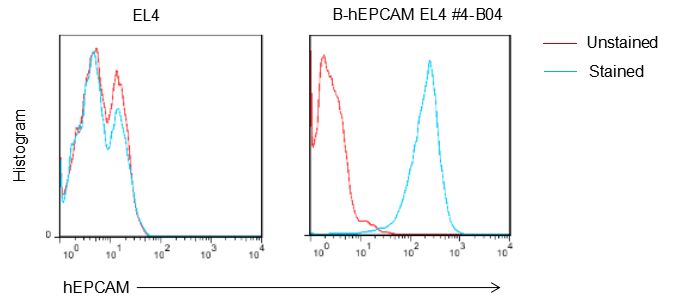
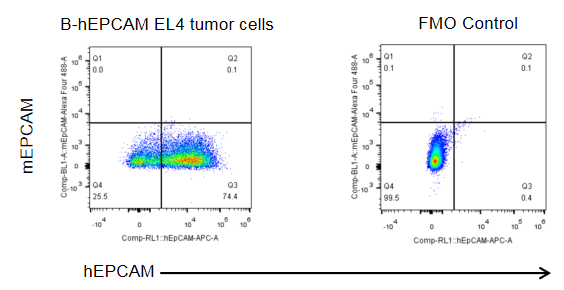
B-hEPCAM EL4 cells were subcutaneously transplanted into C57BL/6 mice (n=5). At the end of the experiment, tumor cells were harvested and assessed for human EPCAM expression by flow cytometry. As shown, human EPCAM was highly expressed on the surface of tumor cells. Therefore, B-hEPCAM EL4 cells can be used for in vivo efficacy studies of novel EPCAM therapeutics.
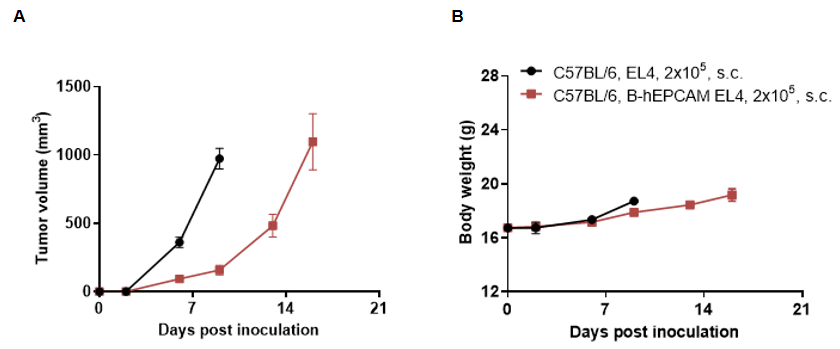
Subcutaneous homograft tumor growth of B-hEPCAM EL4 cells. B-hEPCAM EL4 cells (2x105) and wild-type EL4 cells (2x105) were subcutaneously implanted into C57BL/6 mice (female, 6-9-week-old, n=5). Tumor volume and body weight were measured twice a week. (A) Average tumor volume ± SEM. (B) Body weight (Mean± SEM). Volume was expressed in mm3 using the formula: V=0.5 X long diameter X short diameter2. As shown in panel A, B-hEPCAM EL4 cells were able to establish tumors in vivo and can be used for efficacy studies.
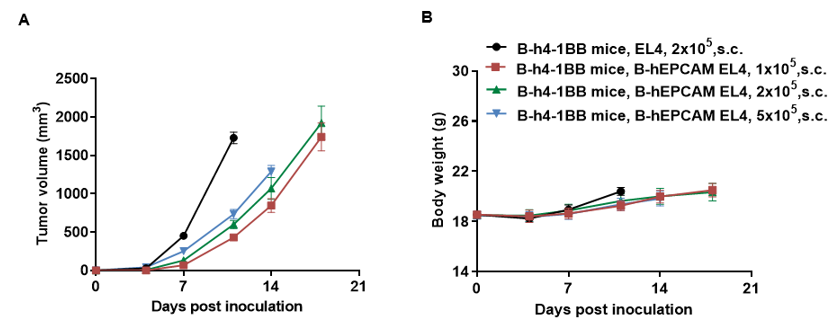
Subcutaneous homograft tumor growth of B-hEPCAM EL4 cells. B-hEPCAM EL4 cells and wild-type EL4 cells were subcutaneously implanted into B-h4-1BB mice (female, 7-week-old, n=6). Tumor volume and body weight were measured twice a week. (A) Average tumor volume. (B) Body weight. Volume was expressed in mm3 using the formula: V=0.5 X long diameter X short diameter2. As shown in panel A, B-hEPCAM EL4 cells were able to establish tumors in vivo and can be used for efficacy studies. Values are expressed as mean ± SEM.
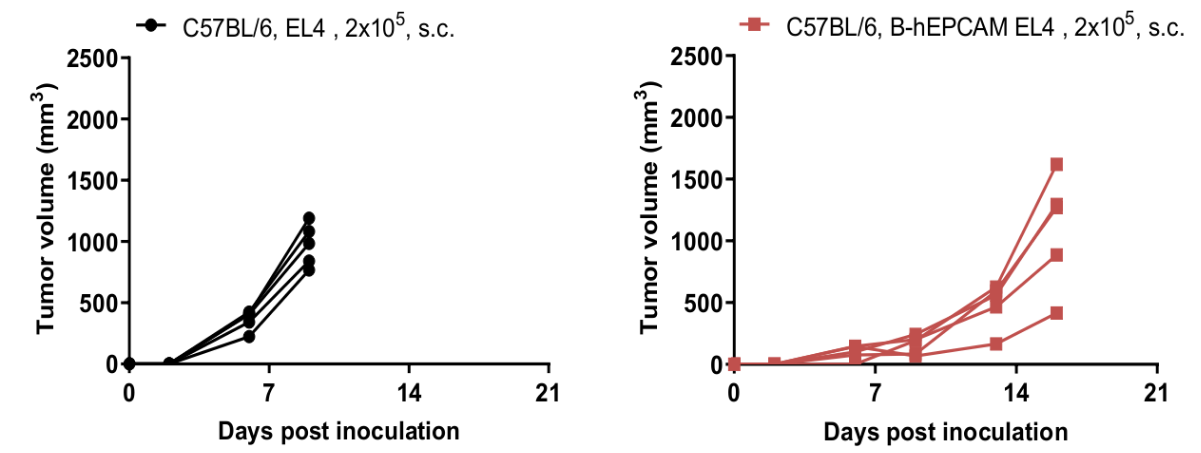
B-hEPCAM EL4 tumor growth of individual mice. B-hEPCAM EL4 cells (2x105) and wild-type EL4 cells (2x105) were subcutaneously implanted into C57BL/6 mice (female, 6-9-week-old, n=5). As shown in panel, B-hEPCAM EL4 cells were able to establish tumors in vivo and can be used for efficacy studies.
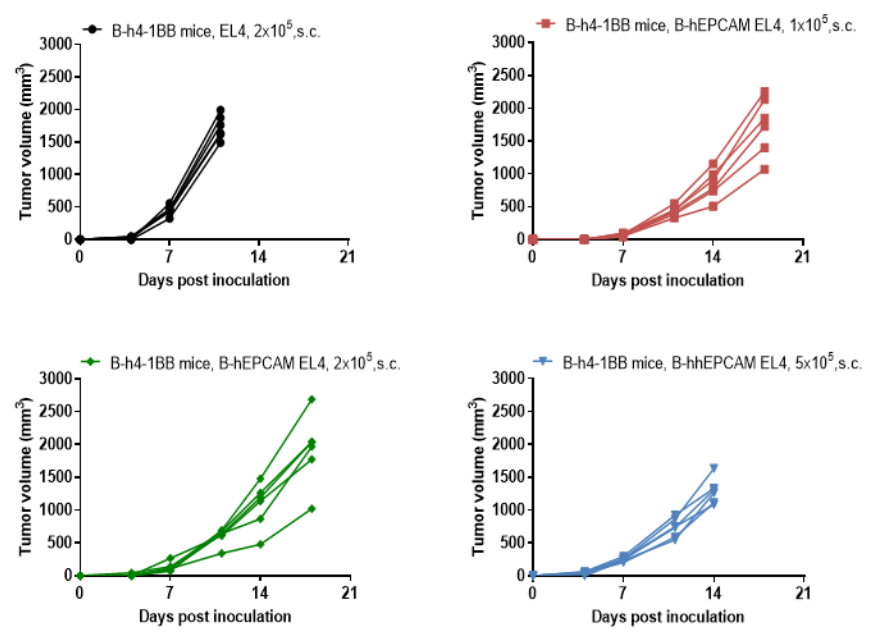
B-hEPCAM EL4 tumor growth of individual mice. B-hEPCAM EL4 cells and wild-type EL4 cells were subcutaneously implanted into B-h4-1BB mice (female, 7-week-old, n=6). As shown in panel, B-hEPCAM EL4 cells were able to establish tumors in vivo and can be used for efficacy studies.